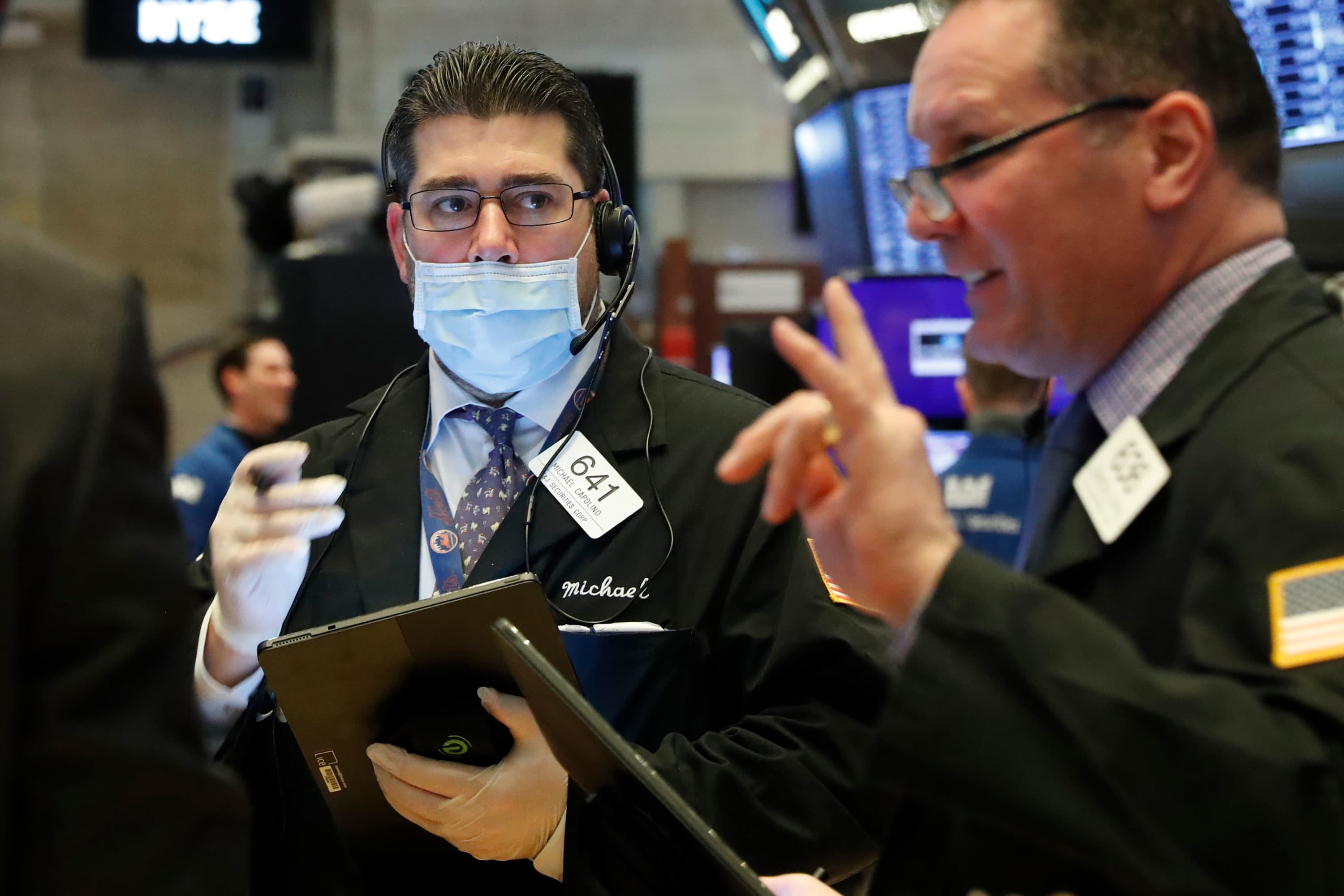Stock futures are flat as traders monitor earnings, stimulus talks

U.S. stock index futures were flat on Wednesday after the major averages registered their first day of losses in five trading sessions.
Futures contracts tied to the Dow Jones Industrial Average dipped just 4 points. They were higher earlier in the overnight session. S&P 500 futures slipped 0.1% and Nasdaq 100 futures gained 0.1%.
Stocks fell on Tuesday, snapping a four-day winning streak. The Dow Jones Industrial Average slid 157.71 points, or 0.6%, while the S&P 500 declined 0.6%. The Nasdaq Composite was the relative outperformer, dipping 0.1%.
The decline came amid a number of headwinds. Eli Lilly said Tuesday afternoon that it would pause its trial of a coronavirus antibody treatment, news that followed Johnson & Johnson’s earlier announcement that it halted its vaccine trial after an “adverse event” was reported. Additionally, hopes for near-term stimulus have faded as Democrats and Republicans remain at odds.
The White House recently proposed $1.8 trillion for an aid package, which House Speaker Nancy Pelosi said “falls significantly short” of what is needed. On Tuesday, Senate Majority Leader Mitch McConnell said that the Senate will vote on a limited stimulus bill later this month, which will be “targeted relief for American workers, including new funding” for Paycheck Protection Program small business loans.
Earnings season kicked off on Tuesday with both JPMorgan Chase and Citigroup reporting better-than-expected results. Bank of America, Goldman Sachs and Wells Fargo are on deck Wednesday, with all three expected to report results before the market opens.
UnitedHealth will also report Wednesday morning, while United Airlines will report after the bell. On Tuesday, Delta reported a wider-than-expected loss for the most recent quarter, including a 75% decline in revenue, as the industry continues to take a hit from Covid-19.
Despite Tuesday’s dip, stocks are still in the green for October, with the Dow up more than 3% while the S&P 500 and Nasdaq have gained more than 4% and 6%, respectively.
“Markets are now hoping for (and trading on) a smooth election, a big stimulus, the end of the pandemic, and the economy being back to 2019 normal early next year,” said Brad McMillan, chief investment officer at $200 billion Commonwealth Financial Network.
However, he noted that the market’s optimism might make it vulnerable to bad news, especially as Covid-19 cases spike in some areas. “While the economy continues to recover, job growth has slowed substantially even as layoffs remain very high—and we are still only halfway back to pre-pandemic employment levels,” he added.
Subscribe to CNBC PRO for exclusive insights and analysis, and live business day programming from around the world.




